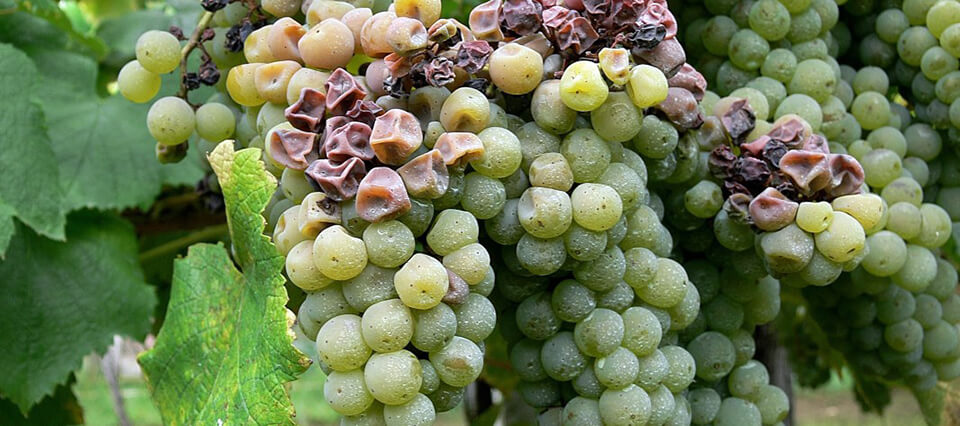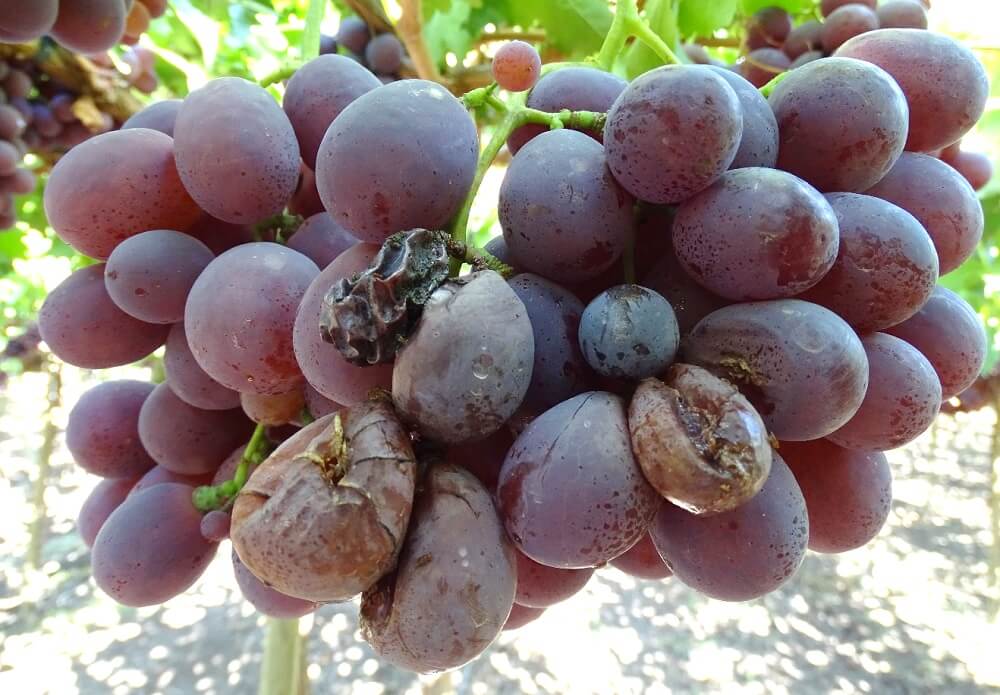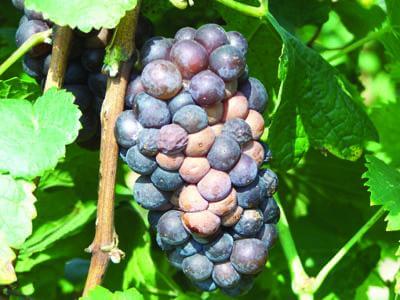
Vid
How to recognize and combat bacterial infections in grapevines
Bacteriosis
Bacterium
Type:
Risk to the plant:
HIGH
Bacteria
Pathogen:

Bacteriosis
WHO CAUSES IT?
Bacterioses in the vine are caused by several species of phytopathogenic bacteria that enter the plant tissue through wounds, stomata or areas of active growth. These bacteria usually survive in the soil, in plant residues or on the surface of plants, remaining dormant until environmental conditions favor their activation. Once inside the plant, the bacteria multiply rapidly, invading the vascular or parenchymatic tissues, depending on the species, which allows them to spread throughout the organism. The bacteria secrete toxins and enzymes that degrade cell walls and obstruct the flow of nutrients and water, weakening the vine and causing various stress symptoms. These bacteria can also form protective biofilms, which gives them some resistance to phytosanitary treatments and adverse environmental conditions. As conditions change, bacteria can spread to other plants, maintaining a constant source of infection in the vineyard.
SYMPTOMS
Bacteriosis in the vine causes a series of symptoms that mainly affect the leaves, stems and roots, compromising the general vitality of the plant. This disease interferes with the transport of nutrients, leading to the decomposition of tissues and the appearance of visible lesions in different parts of the plant. If not controlled in time, it can considerably reduce the yield of grapes and cause significant economic losses.
- Angular and chlorotic Taches on the leaves.
- Necrosis on the leaf margins.
- Gummy exudates on stems and branches.
- Necrotic lesions on young shoots.
- Weakened and discolored roots.
- Reduction in fruit production.


DEVELOPMENT CONDITIONS
Temperature:
20-30°C
Humidity:
75-95%
HOW IS IT SPREAD?
Infected tools, water splashes, wind, contact with infected plant remains, vector insects
HOW TO ELIMINATE IT?
Home treatments
There are no home treatments
Natural allies
Chemical treatments
There are no treatments for this disease. Treatments are directed at the insect vectors that transmit it. See insect treatments.
RECOMMENDED PRODUCTS TO ELIMINATE THE PEST
Sponsored link
Sponsored link
Sponsored link
Sponsored link
Sponsored link
Sponsored link
Sponsored link
Sponsored link
Sponsored link
Effective against all types of fungi
Sponsored link
Sponsored link
Sponsored link
Sponsored link
Sponsored link
Sponsored link
Sponsored link
REPELLENT PLANTS
RECOMMENDATIONS
















































